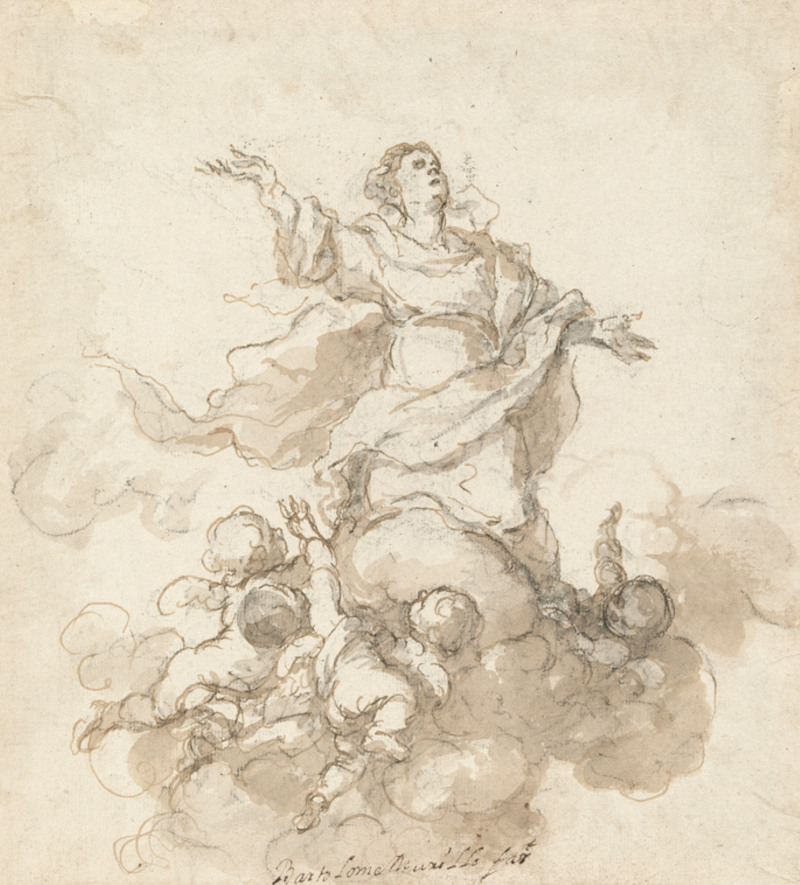Murillo was a highly regarded draughtsman, with his drawings inspiring many of his followers, and also being used to educate them in his compositional methods.
Introduction
Many significant collections in the US and Europe hold drawings from Murillo's career, in a variety of mediums. He worked with chalk, pen and ink and oils for different purposes and a surprisingly large number have survived to the present day.
These items tell us much about the artist's development process and also underline how drawing was still an important art form for some Spanish artists, even though the region did not consider it as vital as the likes of Italy and France.
Established a Drawing School in Seville
Murillo, Juan de Valdés Leal and Francisco de Herrera the Younger set up a drawing academy in Seville which would promote the importance of drawing as a fundamental skill for all artists. This academy did much to ensure their legacy through their students' subsequent careers, and much of the output from this academy would find its way into prominent European art collections.
Many of the artist's followers would make their own sketches of his existing paintings in order to learn their craft. Some of his drawings would also underline the artist's creativity, where he would re-imagine religious themes in order to avoid duplicating his work - Murillo was regularly asked to re-visit common themes as he dealt with one religious institution after another and wanted to avoid becoming stale as an artist.
Purpose of Murillo's Drawings
Murillo's drawings were produced for two main reasons, firstly as studies for upcoming commissions, and alternatively as independent artworks which could be sold as such. Murillo produced hundreds of both, and his reputation ensured that even his drawings could be sold for impressive prices within his own lifetime.
Technique and Mediums
The majority of his drawings, based on a summary of those still remaining today, would appear to have been completed in pen and ink, though often with elements of chalk placed alongside. His use of oil sketching was less common, but still significant enough to warrent mentioning. Pen and ink was popular throughout Europe at this time, though charcoal and pencil work also appears within his own oeuvre.
Much would depend upon the purpose of each drawing, and the need for precision, expression or sale. He might also intend for a drawing to simply be passed around his studio as guidance for younger students, whilst items intended for external use would require a more professional finish, particularly if it was to be signed by the master himself.
Collections holding his Drawings today
Examples of Murillo's drawings can be found in some notable collections, including at the Prado Museum in Madrid. Additionally, the Met Museum in the US and the British Museum in London also hold original items from his hand. The majority of these are in pen and ink, with limited detail and more of a focus on overall form.
Conclusion
Drawing was a key part of Murillo's success as an artist, though its impact is sometimes forgotten by those taking a more fleeting interest in his work. His use of movement within his religious works was planned in the drawing stage, and this medium also helped him to teach his students.
Spanish art had not placed such an importance on drawing as compared to other European nations, but Murillo was able to promote its significance through the impact of his studio. These drawings, included the ones listed below, would also help historians to better understand the processes that this artist went through when planning his highly complex paintings.
Large Images of Murillo Drawings
 Murillo Drawing in Pen and Ink.jpg) The Nativity (Met Museum) Murillo Drawing in Pen and Ink
The Nativity (Met Museum) Murillo Drawing in Pen and Ink
 The Assumption of the Virgin (Black Pencil, Prado Museum
The Assumption of the Virgin (Black Pencil, Prado Museum
References
- Metmuseum - The Nativity by Bartolomé Estebán Murillo
- Prado Museum - Spanish Drawings from the Hamburger Kunsthalle: Cano, Murillo and Goya



